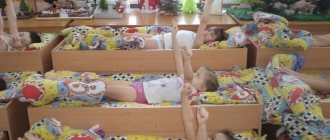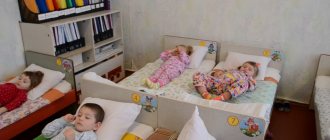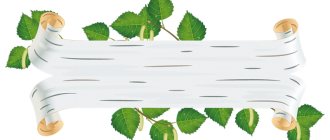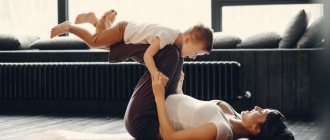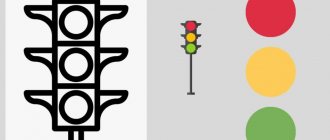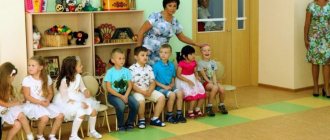Sleep plays a big role in a baby's life. One of its main tasks is to restore strength from the past day and give energy for the future. The process of waking up after daytime and nighttime sleep is no less important. Most children wake up in a bad mood, and some little ones cannot be woken up at all. This makes life difficult for young parents, since babies can be in no mood throughout the day. To prevent this from happening, you can regularly introduce a healthy set of home exercises into your awakening ritual. You can do gymnastics with your baby without getting out of bed.
Many kindergartens have been practicing children's gymnastics after sleep for several years. It helps babies wake up easier, gives them energy and helps them spend the day more comfortably. Some exercises can be done at home. It is important to exercise in a positive and playful manner so that it is enjoyable for you and your baby.
Little children grow quickly, so it is important to start light physical activity at an early age. In order to grow healthy they will need a lot of strength and energy. Children who are hardened from an early age rarely get sick, and they are also characterized by healthy activity and curiosity. Such kids love to communicate with peers and easily make contact with people.
Gymnastics after a nap develops well:
- vision;
- speech;
- memory;
- endurance;
- patience.
Invigorating gymnastics after sleep helps to cope with waking up easier. Before starting a set of exercises, it is important to prepare your baby’s bedroom:
- ventilate the room;
- let light into the room;
- remove everything unnecessary from the bed and floor so that it does not restrict movement;
- prepare the music;
- if classes are held with additional paraphernalia, it must be prepared in advance. (ball, jump rope, hoop, massage blanket).
You can start doing the exercises right in bed, after the child has opened his eyes. It is important to gradually increase the pace, not to rush:
- Slow awakening . At first, turn on the music quietly, and as you wake up, you can increase the volume. For a more positive mood, choose music that your baby likes, even if it is not too rhythmic. Let the light into the bedroom, open the curtains. Take the blanket off the baby and run your hands over the baby's entire body, starting from the shoulders and ending with the heels. You can give a light massage to your feet and palms.
- Warm up . The simplest thing to start with is stretching. Let your baby stretch several times. Next, you can show your baby an exercise with lifting arms and legs in turn, and also carefully perform circular movements with the neck. Do breathing exercises with your child: inhale and exhale deeply several times. After the child finally wakes up, you can move on to more serious exercises where you need the baby to stand.
- Easy game exercises . Before starting charging, it is recommended to ventilate the bedroom where the baby sleeps. This is done so that you can combine the process of gymnastics with light hardening. Light exercise includes the following set of exercises: get up and walk on your toes, then on your heels, raise your knees high, roll from heel to toe and back, you can make small circular movements with your hands starting from the shoulders, slow bends from side to side, and also back and forth. Then the load can be gradually increased.
As soon as your baby starts doing gymnastics after sleep, the positive effect will not be long in coming. Waking up will not be as difficult for the baby as it was before. In order for the classes to be effective, it is enough to perform the exercises 3-4 times, alternating the load with rest. Then the baby’s muscles will always be in good shape. It is important to ensure that the child’s breathing is uniform and calm during exercises.
The main purpose of the exercises after waking up is that the child, by performing them, moves more easily from a sleepy state to wakefulness.
Exercising after sleep has the following positive effects:
- improves mood;
- increases the child’s perseverance;
- prevents various diseases (scoliosis and flat feet);
- strengthens the respiratory tract system;
- improves the nervous system (makes it more resilient);
- makes the child's immunity strong;
- From childhood, a child begins to lead a healthy lifestyle, starting his day with exercise.
Gymnastics after night and daytime sleep does not make any fundamental difference. The only thing that needs to be adjusted is the time. After waking up at night, you should not study for more than 15 minutes. But after a nap, you can do gymnastics for about half an hour. It is necessary to monitor the child’s condition; the set of exercises should not be tiring. It is important that he finds it interesting and fun. Otherwise, the baby may get bored and subsequently lose interest. To prevent this from happening, monitor your baby’s condition and adjust the time based on his mood. After just a few days of practice, you will know exactly what your child likes.
There are different sets of exercises for each age group. What is suitable for a 2-year-old child will no longer be entirely relevant for a child who is 3 years old or more. Therefore, when choosing exercises, it is important to look at the child’s physical fitness and take into account age restrictions.
Children of school and preschool age can perform more complex physical exercises:
- Cat . The child gets on all fours and bends his back down and back up. The back takes the shape of a wheel.
- Kolobok . The baby lies on his back, tucks his knees to his stomach, wraps his arms around his legs and rolls back and forth, working his abdominal muscles.
- Bike . One of the most popular exercises. It is often done not only by children, but also by adults. The exercise is performed while lying on your back. The child raises his legs and begins to make circular movements, imitating riding a bicycle.
If you do gymnastics, follow all the rules, but the child still wakes up cranky, out of mood, or doesn’t want to get up at all. It is worth paying attention to the rhythm of the baby's day. How long does he stay awake, does the baby sleep enough for his age, is there time in his daily routine for relaxation before bed? Certified children's sleep consultant Tatyana Kremneva will help you understand these and many other questions regarding children's sleep. Come to the “Baby’s Dream” Instagram page, read posts, watch live broadcasts.
Children who exercise after sleep are less likely to get sick or tolerate various diseases much easier. Before you start practicing home gymnastics, you can consult your pediatrician about contraindications.
Author: Tatyana Kremneva.
MAGAZINE Preschooler.RF
Gymnastics complex after sleep"SNOWMAN"
I. In cribs
One and two, one and two Simulate making snowballs
We are making a snowman.
We will roll a snowball Alternately pass along the neck on the right and left
Somersault, somersault. Run fingers over cheeks from top to bottom
We sculpted him cleverly, They rub the wings of the nose with their index fingers.
Instead of a nose there is a carrot.
Instead of eyes - coals, put your palms to your forehead and "visor" and
rubbed
Handles and twigs were found. They rub their palms together.
And on the head - a bucket. Rub the index and middle fingers
points in front of and behind the ears
Look, here it is! Place both palms on the top of the head and rock
head.
II. Near the cribs
Sitting on chairs
“let’s warm up frozen feet after a walk in the snow” : stretch your legs forward, clench and unclench your toes; stretch your legs forward, pull your legs with your toes and heels; stretch your legs forward and join them,
“draw” various geometric shapes (circle, square, triangle) with your feet in the air; place your entire foot on the floor, raise your legs on your toes, lifting your heels off the floor as much as possible; from the same IP raise your toes up without lifting your feet from the floor.
Repeat each exercise six to eight times.
I. Breathing exercise
"Candle" . I.p. – feet at the width of the feet, hands in the “lock” , thumbs closed – “candle” . The child takes in air through his nose, purses his lips into a “tube” and blows on the candle (blowing it out). Exhale calmly.
IV. Walking along the path of “Health”
GYMNASTICS COMPLEX AFTER SLEEP
I. In cribs
- I.p.: lying on your back, arms along the body, raise straight legs up, i.p.
- "Log" . IP: lying on your back, arms up, roll from back to stomach, roll from stomach to back.
- "Boat" . IP: lying on your stomach, hands under your chin, bend over, hands to your shoulders - inhale, IP. -exhalation.
- "Barrier" . I.p.: lying on the stomach, arms along the body, raise the right leg, i.p., raise the left leg, i.p.
- "Ladybug" . IP: sitting on your heels, straighten up, stretch up, sit on your heels, bend forward, touch your knees with your nose, move your arms back, etc.
II. Near the cribs
6. Self-massage of the head ( “let’s wash your head” ).
I.p. - sitting on chairs. The teacher gives instructions, the children imitate the movements: “Turn on the water in the shower. Touch it... Oh, it's hot! Add cold water, wet your hair, pour shampoo into your palm, lather your hair, wash your hair thoroughly from all sides... No, the back is not washed at all. Good now! Rinse off the foam again from all sides. Sasha still had foam on his temples. Now everything is clean, turn off the water. Take a towel and gently dry your hair. Take a comb and comb your hair thoroughly. Don't press the comb too hard or you will scratch your scalp. You are so Beautiful!"
III. Breathing exercise
7. "The wind is rustling in the chimney".
I am a strong wind, I fly, I fly wherever I want:
I want to whistle to the left, I want to blow to the right,
I can blow upward into the clouds, but for now I’ll disperse the clouds.
Hands down, legs slightly apart, inhale through the nose. Turn your head to the left, make a tube with your lips and blow. Head straight - inhale, head to the right - exhale, lips in a tube.
IV. Walking along the path of “Health”
GYMNASTICS COMPLEX AFTER SLEEP
I. In cribs
- I.p.: Lying on your back, arms along your body, raise your arms up, pull yourself up, arms forward, etc.
- I.p.: lying on your back, arms along the body, pull your socks towards you, i.p.
- I.p.: Sitting, legs straight, arms supported at the back, spread the toes to the sides, etc.
- "A pedestrian" . I.p. the same, stepping with your toes, bending your knees, the same with straightening your legs.
II. Near the cribs
5. "Hammers" . I.p.: sitting, legs bent, arms supported behind the back, toes on the toes, hitting the floor with the left heel.
I.p.: o.s., Hands on the belt, rolling from toes to heels.
III. Breathing exercises “We are building a house”
- "Raising bricks " I.p. - legs apart, arms down, fingers spread. 1 - inhale; 2 - exhale - lean forward, clench your fingers into a fist ( “Wow!” ); 3 - inhale; 4 - return to IP.
- “Putting in the solution . I.p. - legs apart, hands on the belt, elbows back, 1 - inhale; 2 - exhale - turn the body to the right (left), swing the right (left) arm to the side, back, forward ( "One!" ); 3 - return to IP.
- "White the ceiling" . I.p. - legs apart, arms down. 1 - inhale - raise your right hand up and back; 2 - exhale - lower your right hand; 3 - inhale - raise your left hand up and back; 4 - exhale - lower your left hand.
- “Putting up wallpaper . I.p. - basic stance, arms bent at the elbows at waist level. 1 - inhale; 2 - exhale - rise on your toes, straight arms up; 3 - inhale; 4 - exhale - return to I.p.
- "Painting the floor" . I.p. - standing on your knees, arms bent at the elbows, hand to fist. 1 - inhale; 2 - exhale - bend forward slightly, stretch your arms forward, fingers apart ( “Zhik!” ); 3 - inhale; 4 - exhale - return to I.p.
IV. Walking along the path of “Health”
GYMNASTICS COMPLEX AFTER SLEEP
I. In cribs
- IP: lying on your back, arms along the body, raise your right leg (straight), IP, raise your left leg (straight), IP.
- IP: lying on your back, hands in front of you “holding the steering wheel” , “riding a bicycle” , IP.
- I.p.: lying on your back, arms up, turn the body to the right, i.p., turn the body to the left, i.p.
- IP: lying on your back, hands behind your head, bring your elbows together in front (elbows touching each other) - exhale, IP, elbows touching the bed - inhale.
- I.p.: sitting, legs crossed, hands on the belt, arms up through the sides - inhale, exhale.
II. Near the cribs
When performing the exercises, inhale through the nose, mouth closed.
6. “Start the engine . I.p. - stand with your legs apart, hands in front of your chest, clenched into fists. Inhale - i.p.; exhale - rotate your bent arms (one around the other) at chest level; at the same time, say with one breath: “R-r-r-r” . Repeat four to six times.
III. Breathing exercise
7. "Little Frog" . I.p. - main stand. Imagine how the frog makes quick, sharp jumps. Squat down slightly, sigh, push off and jump with both legs moving forward. As you exhale, slowly say “K-v-a-a-a .
IV. Walking along the path of “Health”
| Next > |
